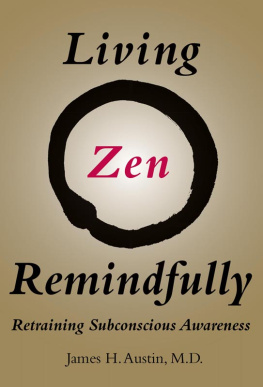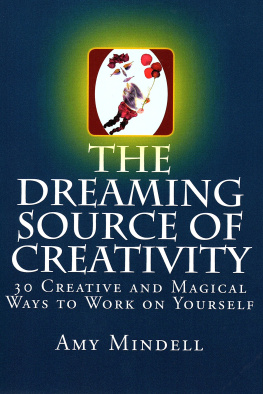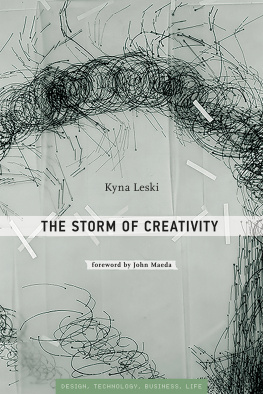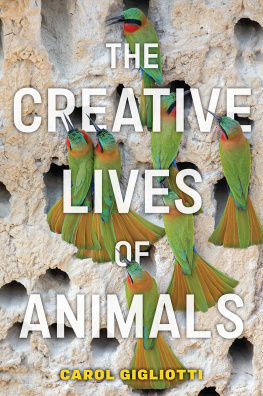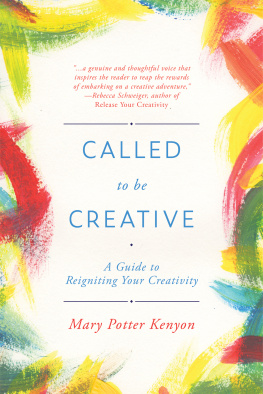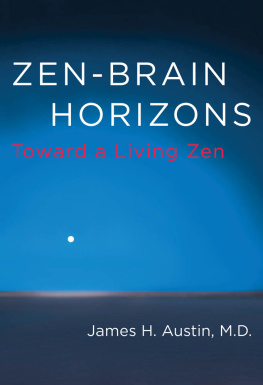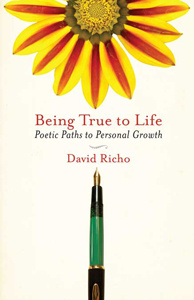Chase, Chance, and Creativity
Every man depends on the work of his predecessors. When you hear of a sudden unexpected discovery-a bolt from the blue as it were-you can always be sure that it has grown up by the influence of one man on another, and it is this mutual influence which makes the enormous possibility of scientific advance.
Lord Rutherford
Chase, Chance, and Creativity
The Lucky Art of Novelty
James H. Austin



To my parents and teachers who set the example, to friends and co-workers who helped at all stages, and to my wife, Judith, who made the rest possible.
Contents
ix
xi
xiii
xvii
Appendixes
List of Illustrations
Preface to the MIT Press Edition
This edition appears a quarter of a century after the first. Most of the original remains untouched; I've updated only certain parts. The original intent remains: to provide a brief, personal story of the ways persistence, chance, and creativity interact in biomedical research.
During these past twenty-five years, the literature on creativity has exploded. In 1988, a new Creativity Research Journal was founded. Readers who might wish to review the topic of creativity as a whole now have available a two-volume encyclopedia published in 1999.'
For my taste, most of the academic literature on creativity remains too formal and one-dimensional to convey the intimate flavor of biomedical research. For example, though the Eiicyclopedia summarizes topics from A ("acting") to Z ("Zen"), its index cites only three listings for chance. Its readers will find no in-depth analysis of the typology of chance, and no system of organizing principles that links its varieties with prescient statements by such notable figures as Kettering, Pasteur, and Disraeli. Nor will they find emphasized specific examples of how the four varieties interact, either in the kinds of ordinary "happenings" in which this minor author participated or in the major memorable scientific discoveries of recent centuries.
Does luck enter into creativity? Lately, no one in my field, and relatively few outside it--' seem inclined to examine or weigh its influence. In fact, I was led originally to write part II of this book because the operations of two simple-minded axioms appeared to have been overlooked. The first is that many of the most novel discoveries tend to occur when the life path of one particular person happens to intersect the trajectories of several varieties of chance. Underlying so elementary a notion are several subtle factors that converge accidentally.
How do they happen to come together fortuitously? This becomes more apparent when we look deeply into the story behind the familiar story of Alexander Fleming and the penicillin mold. "The Fleming Effect" suggested itself as a phrase that might help us recall that such fourfold closures can, and do occur.
The second simple-minded axiom follows from the first: the more diversity among these individual varieties of chance, the more unique is the creative product when their lines intersect.
Luck comes in degrees. So does novelty, the hallmark of the creative process, and the yardstick by which its product is measured. A key agency of this novelty is intuition, a process reaching far beyond ordinary logic. Few firm facts clarify the mechanisms of intuition, but speculations keep multiplying. Someday, a multidimensional study of intuition-one that includes advanced techniques of brain neuroimaging-may shed much more light on its physiological origins. Beyond such needed research lies a still more daunting task: to understand the psychophysiological origins of our most profound forms of insight. These are the extraordinary realizations that plumb existential forms of wisdom, the kinds that unveil "the way all things really are.,,
I wasn't ready to appreciate the nature of such "awakenings" until long after I ventured into Zen. Buddhism reserves the technical term, prajna, for the awesome flash of these refinements of insight. Prajna operates at our deeper levels of precognitive processing. It unveils instantly, with utmost clarity, our most profound, comprehensive forms of existential understanding. These "peak" moments have remarkable creative potentials. They can transform not just one's momentary state of consciousness, but one's subsequent attitudes and behavior as well. Our neurosciences are barely starting to glimpse the dimensions of these age-old processes of creative transformation."
James H. Austin M.D.
Moscow, Idaho
September, 2002
Preface
inquiry. It is no use looking to scientific 'papers', for they not merely conceal but actively misrepresent the reasoning that goes into the work they describe.
Peter Medawar
This is a story of the ways persistence, chance, and creativity interact in medical research. My thesis is that novelty in research is like that in any endeavor-it springs from the dynamic interplay among several ingredients: personal life style, people, luck, intuition, and system.
The idea for the book evolved when I was invited to deliver the first Saul Korey Lecture at the Albert Einstein College of Medicine. Thinking over what I might say, it occurred to me that here was a unique opportunity. This time I could depart from the traditional formal scientific lecture and do what I had really wanted to do for years; trace the roots of our medical research back to their very beginnings. Finally, I could "tell it like it really was," stress the interactions with other persons and emphasize the elements of chance, for these two factors often determined not only the direction of our research but also its success or failure.
To write such an "inside" story, the first part of the book had to take the form of a personal narrative. Neurologists in particular, and scientific investigators in general, rarely write this personal a statement of their thoughts and actions. Perhaps the real reason is that there is no survival value in using the pronoun, "I," and even remotely appearing smug, self-seeking, and pretentious. After all, why risk the immodesty of writing about yourself if you're not Alexander Fleming, and if penicillin, DNA, or the Nobel Prize are not involved? Too high a price is exacted by the scientific community for any display of ego.
Several reasons dictated my going ahead this way despite the personal cost. The first is that I have always been deeply interested in the mechanisms by which things happen. Experience tells me that research is a series of contingencies, of zigzags, joined by one fragile link after another. You would never realize this from reading the tidy, aseptic research accounts that fill our libraries. For balance, someone should present a different side of the picture-show some contemporary research in all its haphazard, unpredictable complexity. This book aims to do so.
A second reason for going ahead is to help clear up serious recurrent misconceptions about medical research among many laymen and their elected representatives. The illusions: crash programs with "big" money will "buy" big results; all research can be "directed" on a contract basis toward specified "targets"; exploration is justified only insofar as it brings practical results at predictable times. It is crucial to dispel these misunderstandings, because many grants for research have been increasingly slashed since 1967 (the year of the high-water mark in federal support for research). All the more reason then, to encourage benefactors in government agencies and foundations to permit their investigators enough independence so that they may be free to follow their creative instincts most fruitfully.


